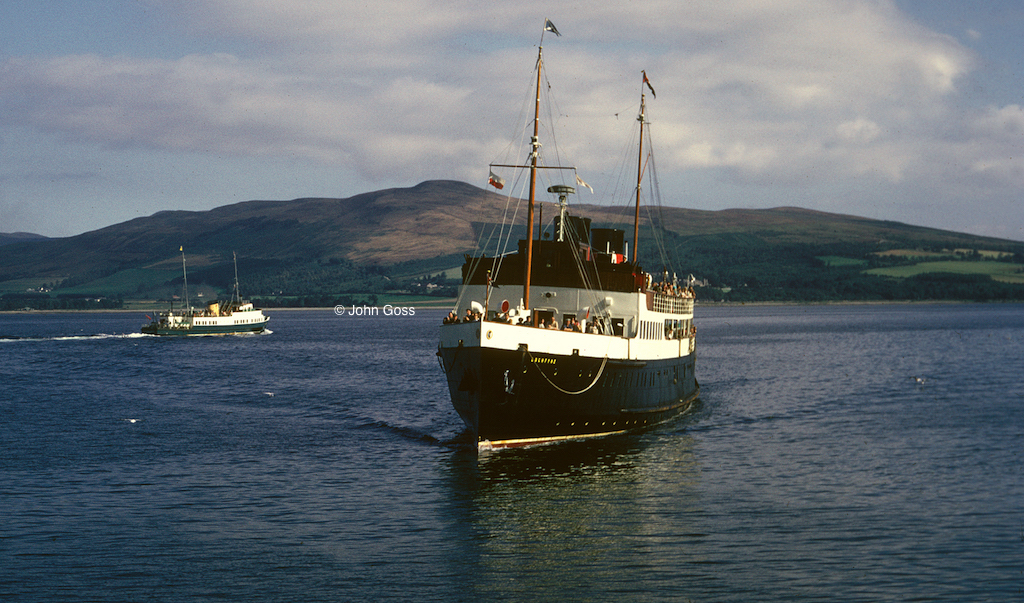
In his President’s Address Roy Paterson showcased more than 100 images from the CRSC Digital Archive, including this photograph by John Goss of Lochfyne arriving at Rothesay in the late 1960s
CRSC presidents traditionally reveal something about themselves in the start-of-session ‘President’s Address’. On Wednesday 9 October 2019 Roy Paterson proved no exception. His talk was a virtuoso blend of still and movie, old and new, personal and familiar, enriched by well chosen music and brilliant technical skill. The seamless way he wove all these elements together made for a compelling evening, as Robin Copland reports.
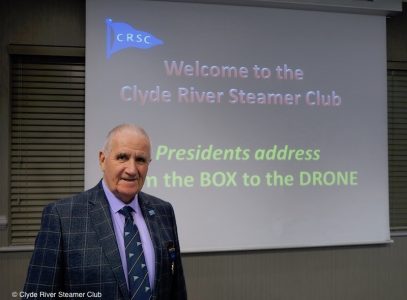
Roy Paterson, pictured shortly before the start of the meeting on 9 October. His talk was a fascinating blend of past and present, bound together by his technical skill and wonderfully apt musical excerpts
If the first of CRSC’s 2019-20 meetings is anything to go by, then we are all in for a fantastic season of talks. That’s one way of looking at it. Another might be that Club President Roy Paterson set the bar so high that I am glad that I am not one of this season’s presenters!
The evening began with a short update from Waverley Excursions’ General Manager Paul Semple on the Boiler Refit Appeal. Paul said that in addition to the £1m donation from the Scottish Government, the appeal had attracted contributions large and small from all over the world, including China and the United States. Talks are ongoing with the National Heritage Lottery Fund, and Waverley Excursions are planning a full season for 2020, but the appeal is still some way short of its £2.3m target — so donations will be most welcome.
Then it was on to Roy to give his presidential address. The title was “From the Box to the Drone”, but the underlying theme was Roy’s passion: his love of the steamers, his interest in photography, his lifelong affection for the Clyde and its Firth, his memories of childhood holidays at Millport.
Here was a man o’ pairts sharing his life. It was a memorable hour.
Roy raided the rich CRSC archive as one of his sources for photographs. A sub-theme running through his presentation was the digital editing and improvement wrought on some of the old glass slides. Black-and-white photos of ships long gone, taken by anonymous enthusiasts long dead, were brought back to life for us all to savour. He guided us through some of the technical challenges by showing us the ‘before’ and ‘after’ images of favourite ships.
My personal highlights were the 1880s Broomielaw pictures, including a spectacular one of a paddler departing for “faraway places like Govan”, as Roy pithily put it! Humour was never far away on the night. Then there was the wonderful shot of Jeanie Deans in which the colour had faded. Roy took it back to a black-and-white image, then digitally corrected the colour to show us ‘Jeanie’ in all her late-career splendour.
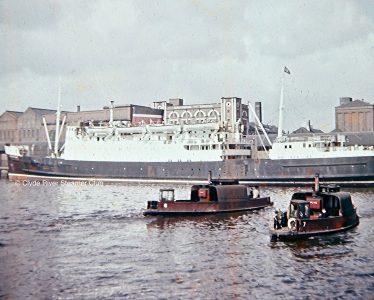
Memories of childhood: Roy’s love of the Clyde was influenced by up-river crossings on the old double-ended passenger ferries, pictured here with Scottish Coast in Burns & Laird colours
He also took us back to his childhood in the 1950s and 60s, and told us of the 37 bus trip to Glasgow Central, still with its old train indicator boards; of the train trip to Wemyss Bay (he judged that his dad was a closet steamer dreamer – because they could have gone via Largs!); of the sea swishing under the pier as the family made their way down the covered concourse at Wemyss Bay to ‘the Millport berth’.
He shared some of his own early pictures, taken with a Box Brownie, and others showing Talisman and Jeanie Deans at the Old Pier. He told us stories of trips to the amusement arcade at the pier head in Largs – usually out on Ashton and back on Leven (“those two wee boats would sail in the dirtiest of weather!”).
Then there was Keppel Pier — how he cycled round to see the ‘Duchesses’ arrive and depart for Campbeltown, or waited on Talisman and raced her round to the Old Pier. Who would do such a thing, he had wondered – was he the only one so consumed by the steamers? Then he met Walter Bowie who told him of CRSC. “Was this like Alcoholics Anonymous?” he wondered. “Will it help?” asked his long-suffering wife!
But Roy didn’t just photograph the steamers. He showed a fabulous portrait he had taken, which won first prize in the annual competition run by the Glasgow District Photographic Union (GDPU).
John Goss’s photographic work was also sampled. His studies of King George V at Tobermory and Portree were memorable. We were shown his Clyde pictures too – Caledonia, MacBraynes’ Lochfyne and a yellow-lummed Waverley.
Roy highlighted three standout images: Duchess of Hamilton at Keppel, Waverley at Arrochar and a stunning image of the 1934 paddler Caledonia leaving Tighnabruaich.

Millport pierhead in the 1950s
Mixed in with the still photographs were a series of aerial drone movies filmed at Ardrossan by CRSC member and former committee man, Allan Smith.
These were of the highest quality, and the room sat silent as we watched (at various times) Hebridean Isles approach the harbour, Caledonian Isles depart for Brodick and, my own personal favourite, Isle of Arran reverse out of the Irish berth, turn on a sixpence and, once clear of the knuckle, accelerate slowly at first, then pick up speed as she moved out of the confines of the harbour into the Firth itself. The camera followed her out a good way and it was a fascinating angle and view.
Roy’s presentation was a tour de force: the time passed in a moment. In his vote of thanks, Club Vice-President Andy admitted to being positively shell-shocked as he suddenly realised he would have to “follow that” next year!
Most of the images on this website are subject to copyright law. Please do not reproduce them on Facebook, Pinterest or any other public platform without first asking permission from info@crsc.org.uk
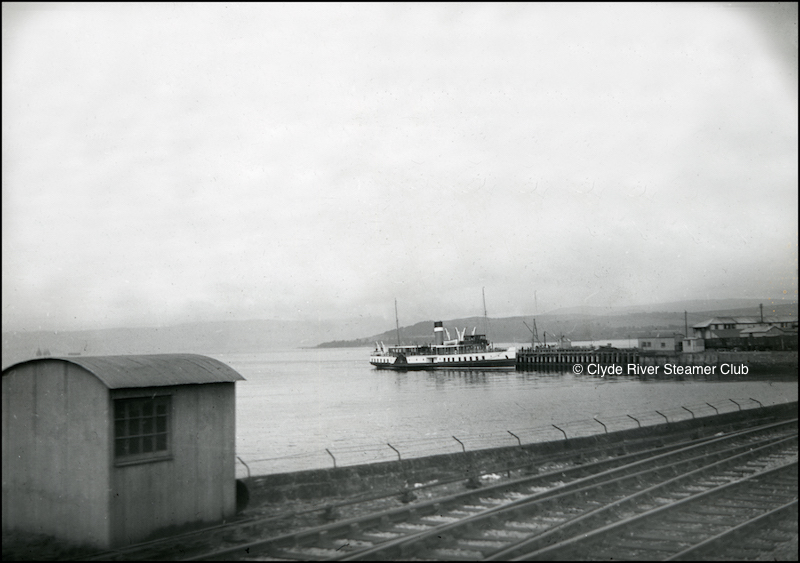
Talisman at Craigendoran in her 1946-7 condition
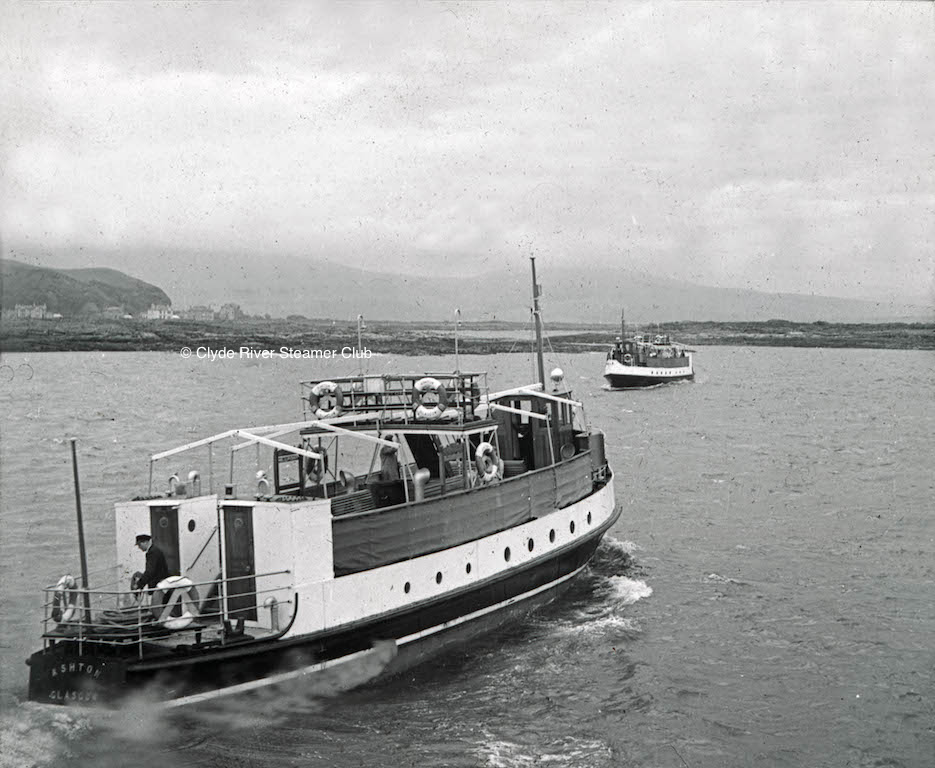
Ashton and Leven c1960 off the Old Pier, Millport

From the CRSC digital archive: Jupiter and Duchess of Fife at Rothesay in 1923
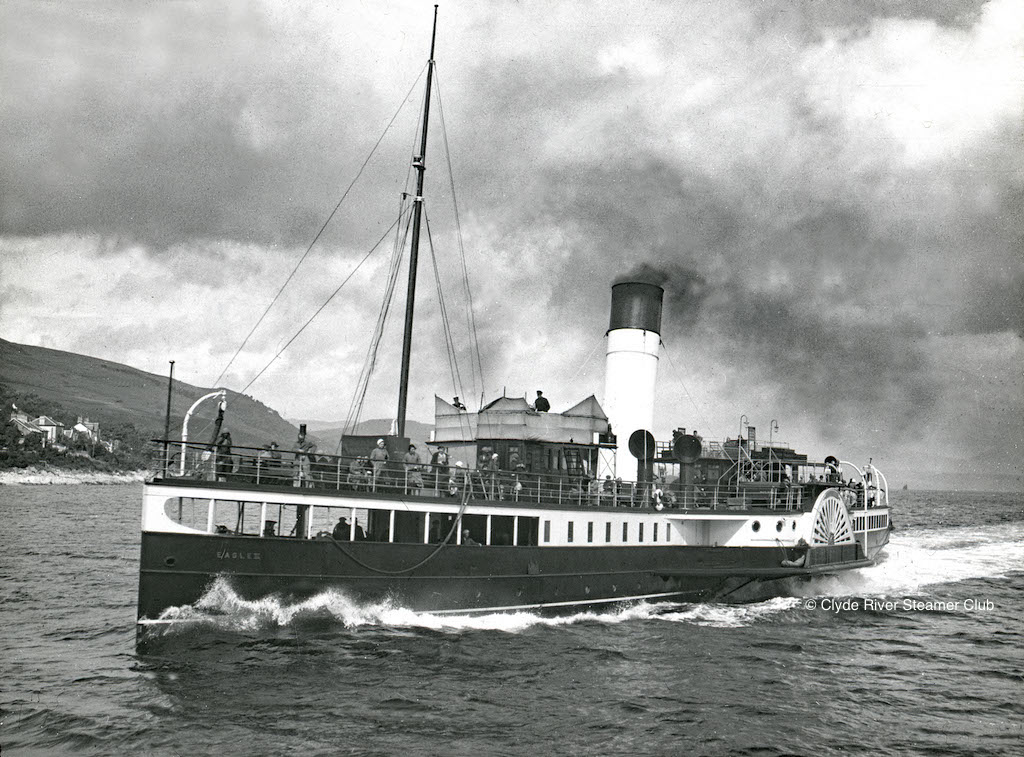
At speed: close-up of Eagle III off Innellan c1930
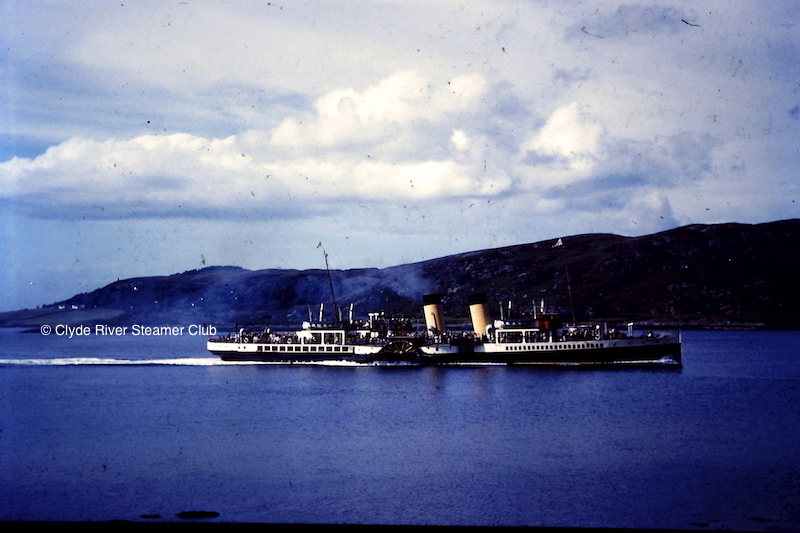
Jeanie Deans (1) — archive photograph before undergoing Roy’s cleaning skills
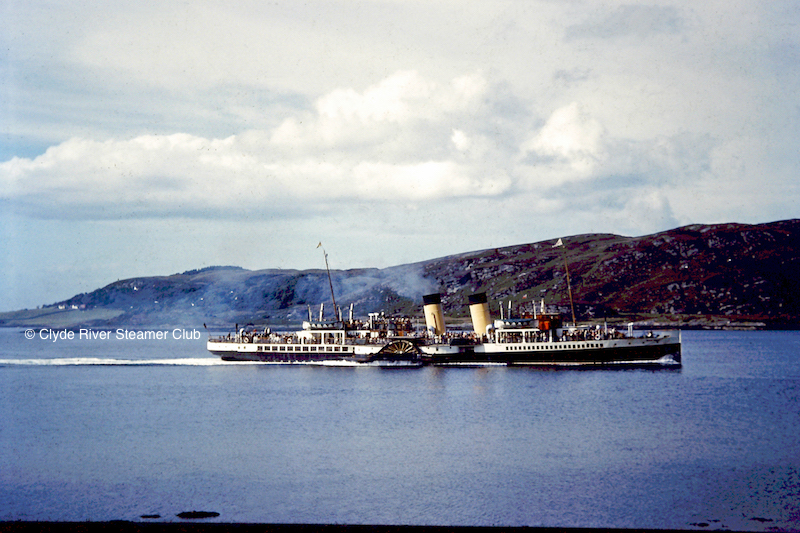
Jeanie Deans (2) — archive photograph after undergoing Roy’s cleaning skills
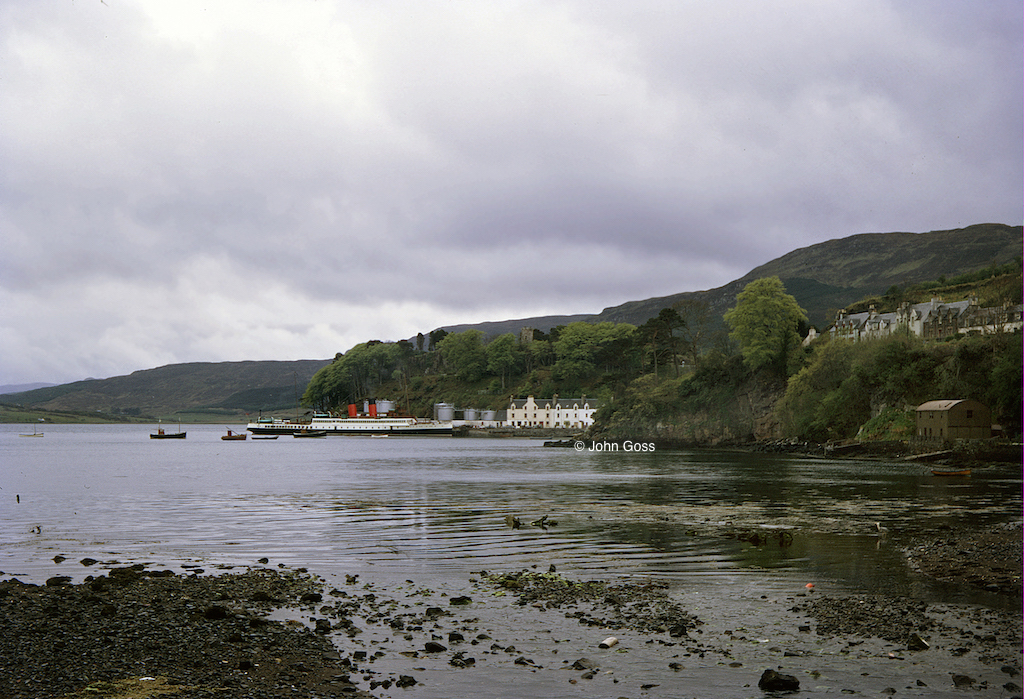
King George V at Portree — landscape portrait by John Goss in May 1970
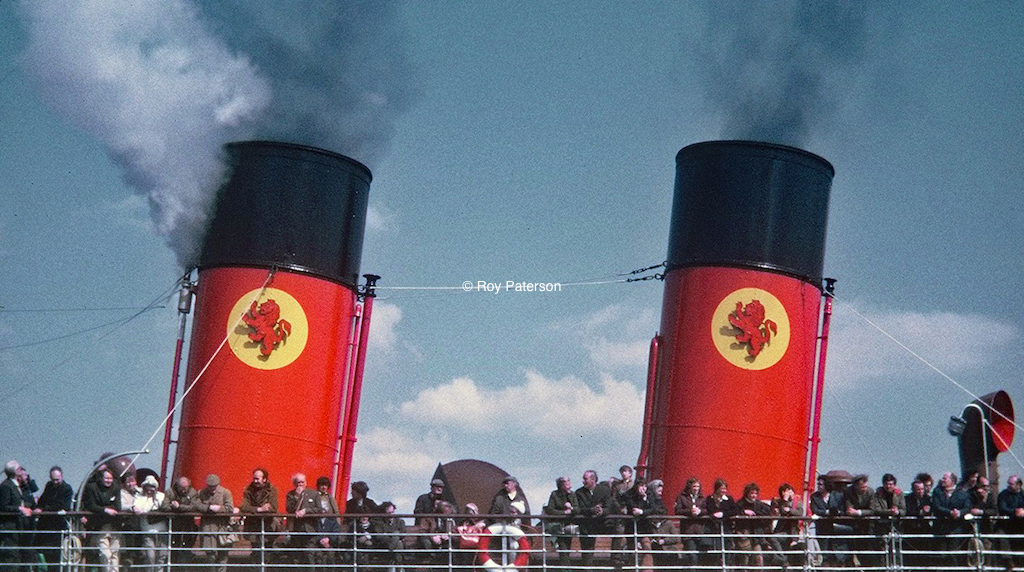
King George V’s funnels, captured on camera by Roy Paterson during a CRSC early season charter in 1974
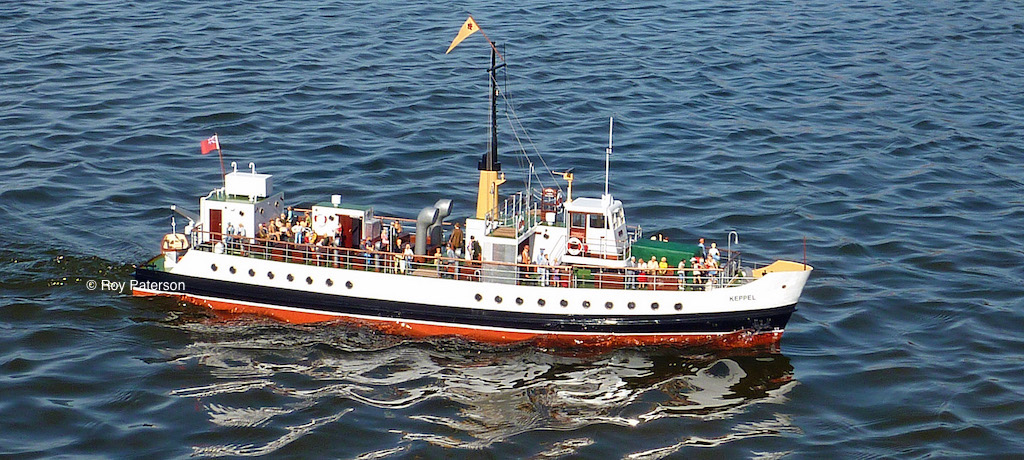
Lifelike: Roy’s photograph of the model of Keppel made by Club member Gordon Wilson
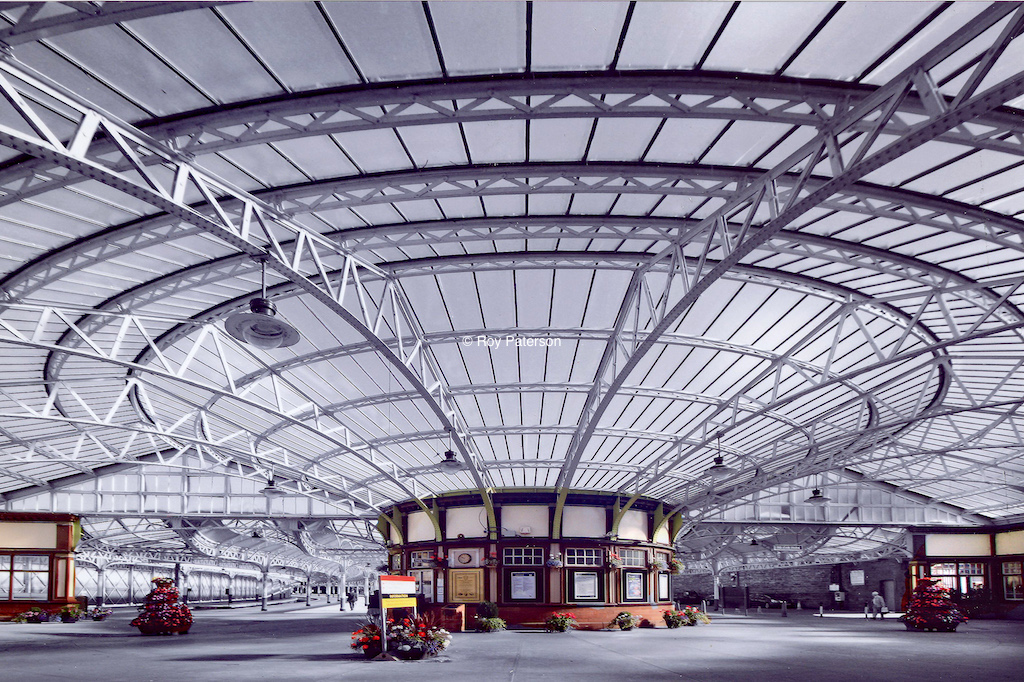
Wemyss Bay: the walk down the station concourse to the pier remains one of Roy’s favourite childhood memories
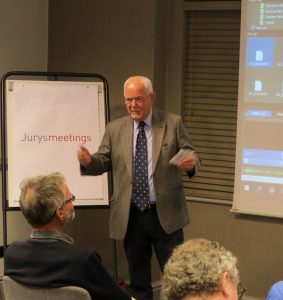
CRSC Vice-President Andy Anderson opened and closed the meeting in his irrepressibly witty style
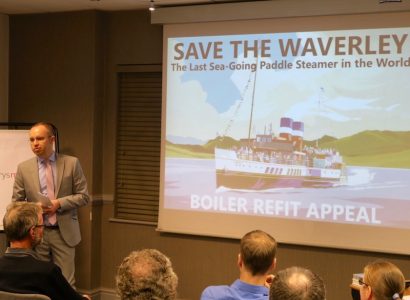
Paul Semple gave us an update on the Waverley Boiler Refit Appeal: despite the Scottish Government’s donation, the target has not yet been reached

Hebridean Isles arriving at Ardrossan’s Irish berth — a clip from one of the captivating drone movies provided by Club member Allan Smith
This is a good time to join CRSC. Click here for your £10 membership and take advantage of all the benefits.
Published on 11 October 2019











